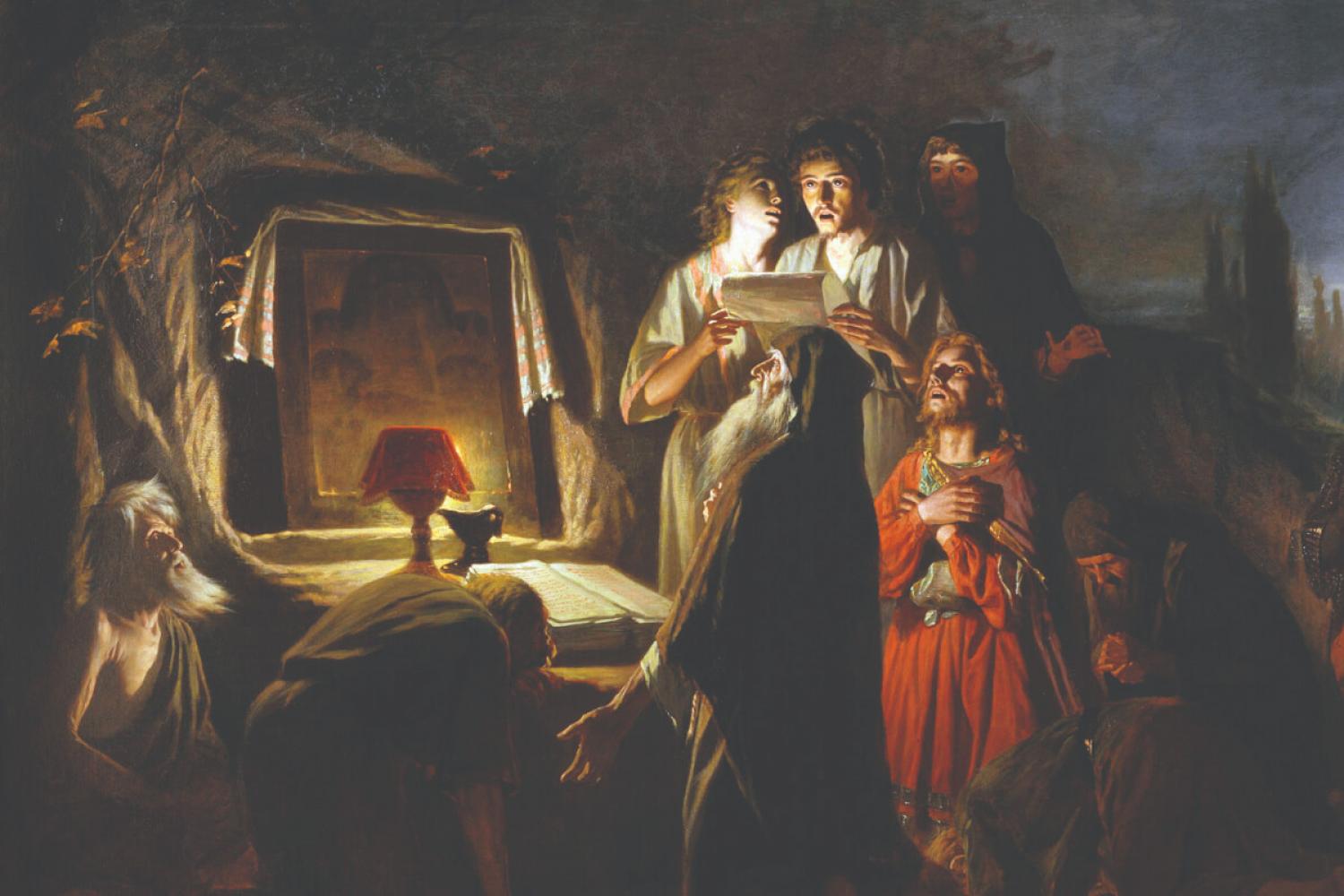
Vasily Perov’s 1880 “The First Christians in Kiev” seeks to present a simple reality: until the Christianization of Kiev (alternatively, Kyiv) in AD 988, Christians living amongst the pagan society were often forced to worship as if outlaws, in the dark of night without the benefit of dedicated churches and altars.
Vasily Perov was born in 1834, the illegitimate son of a Germanic baron in Tobolsk, a city in western Siberia, Russia. Although his parents were wed not long after his birth, the laws of the time made it impossible for him to inherit his father’s name and title. He chose the surname “Perov” later in life: the nickname, coming from Russian the word for “feather,” had been given to him by a childhood calligraphy teacher.
Perov was trained as an artist at the prestigious Moscow School of Painting, Sculpture and Architecture; years later, he would be awarded a professorship at the same institute. Perov was well-decorated in his own time, and some of his most famous works, consisting of paintings of the daily activities of the lower social strata in cities across Europe, were inspired by a state-sponsored trip in honor of his achievements. Ironically, not long after receiving a professorship in Moscow, Perov helped to found the Peredyizhniki, a group of Russian realist painters protesting academic restrictions.
Perov’s painting depicts a difficult time for Christians in Kyiv. Although Christian missionaries had been active in that part of the world (with St. Andrew himself ministering in the area) and there had been Christian rulers of Kyiv, the late decades of the tenth century were firmly pagan. The story of the first martyrs of Kyiv illuminates the situation: In the midst of pagan festivals that included human sacrifice in honor of Vladimir the Great's ascension to the throne, a young boy, John, was selected by lot to be sacrificed. His Christian father, Theodore, refused to give John on to the priests, declaring the pagan gods to be merely inanimate blocks of wood. For this, both Theodore and John were put to death. This event is said to have impressed Vladimir, who was moved to see one man willing to stand against the violent and angry crowd.
Some years later, in 987, Vladimir sent emissaries to investigate the religions of neighboring peoples. Although unconvinced by the Muslims for the sadness of their camp and prohibitions on alcohol, the Jews for their loss of the city of Jerusalem (which Vladimir concluded disproved their claims of election), and a lack of beauty in the churches of the German Christians, his emissaries reported encountering unspeakable beauty amongst the Christians in the Divine Liturgy at the Hagia Sophia in Constantinople.
When Vladimir won an important campaign against the Byzantine Empire the next year and asked for the hand of Emperor Basil II’s sister, Anna, in marriage, he was prepared to accept their beautiful Christian faith as his own. He was baptized, taking the Christian name Basil, and married Anna on the same day. When he returned to Kyiv, he had his sons and nobles baptized in the river and tore down the pagan monuments and statues of the city (many of which he himself had established), before inviting the entire city to the river. Many people came to accept baptism, entering the river where the priests waited.
Perov’s depiction of the first Christians of Kyiv can be interpreted in the light of his other works. Here, the scene of Christian worship does not appear to be limited to the lower social strata, based on the varying manners of dress and grooming of the worshippers. Nevertheless, until the Christianization under Vladimir, the Christians of Kyiv were forced to unite to worship at the margins, passing on the faith through generations of uncertainty. This pattern of persecuted Christians quietly living out the faith has repeated itself through the history of the Church.

The First Draught
To receive the Weekly Update in your inbox every week, along with our weekly Lectio Brevis providing insights into upcoming Mass readings, subscribe to The First Draught.